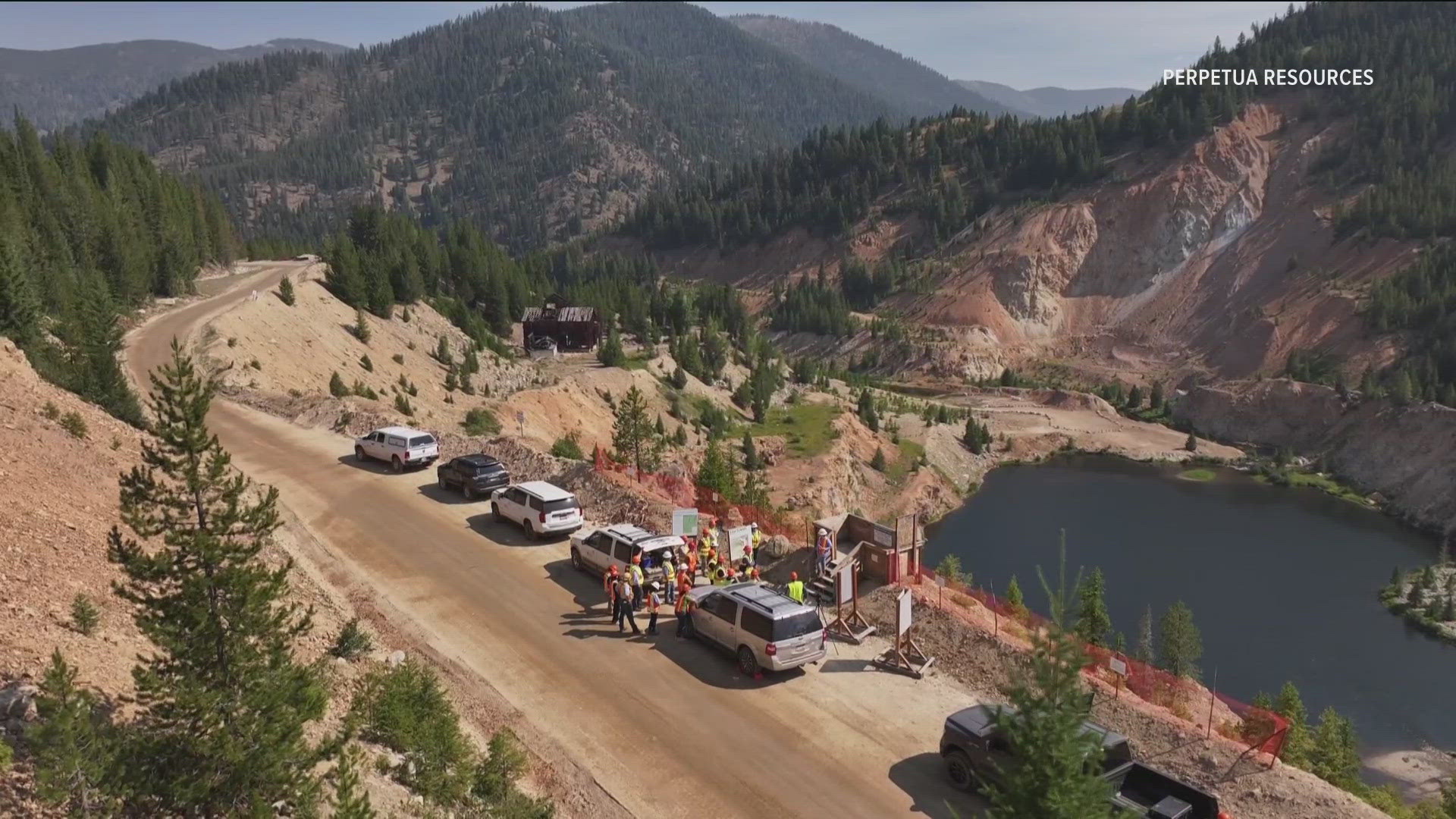BOISE, Idaho — Idaho is the top choice for the first new nuclear test reactor in the country in decades, the U.S. Department of Energy said Monday.
The agency released a draft environmental impact statement naming the Idaho National Laboratory as its preferred site for the proposed Versatile Test Reactor, or VTR.
Officials say the reactor is needed to help revamp the nation's fading nuclear power industry and reduce greenhouse gas emissions by developing safer fuel and power plants.
The Oak Ridge National Laboratory in Tennessee is an alternative for the new reactor if further study finds the Idaho site doesn't work.
The Energy Department last month, in an apparent inadvertent tweet, said Idaho was the agency's top choice for the reactor ahead of Tennessee. U.S. Republican Sen. Jim Risch amplified the tweet with a congratulatory retweet, and the Energy Department later confirmed to The Associated Press in an email that Idaho was its top choice.
The release of the draft environmental impact statement Monday begins a formal process with public involvement. The Energy Department is taking public comments on the draft document for 45 days. The next step is issuing a final environmental impact statement and a formal decision selecting the site, expected in 2021. Plans call for building the reactor by the end of 2025.
"The VTR will help ensure that (the Energy Department) and our industry partners can develop innovative nuclear technologies to supply the United States, and the world, with abundant carbon-free energy," Rita Baranwal, assistant secretary for Nuclear Energy, said in a statement.
Officials in the draft environmental impact statement said Idaho became the preferred site over Tennessee because of infrastructure at the Energy Department's 890-square-mile (2,300-square-kilometer) Idaho site in high desert sagebrush steppe about 50 miles (80 kilometers) west of Idaho Falls.
The Idaho site contains the Materials and Fuels Complex, or MFC. That facility has the Hot Fuel Examination Facility, and other specialty labs and facilities, that could examine radioactive spent nuclear fuel to see how it has performed in the test reactor.
Idaho "was selected primarily because the project would make use of numerous facilities at MFC," the Energy Department said in the draft environmental impact statement.
The U.S. is currently involved in a massive effort to revamp the nation's fading nuclear power industry and reduce greenhouse gas emissions by developing safer fuel and power plants. Idaho National Laboratory is a key component in that plan started during the Obama administration and continued under the Trump administration.
The new director at the Idaho National Laboratory, John Wagner, said last week that talks with the incoming Biden administration indicate continuing support for nuclear research.
The push to revamp nuclear power plants coincides with shifting attitudes on nuclear power as it has become apparent that renewable energy sources such as wind and solar won't be able to replace the burning of fossil fuels to meet demands.
Burning fossil fuels is blamed for global warming as well as bad air. The World Health Organization estimates that 4.2 million people die annually due to air pollution.
The U.S. gets about 20% of its energy from nuclear power produced at 96 nuclear plants in 29 states. They account for about 55% of the nation's clean energy production, the Energy Department says. The reactors are conventional "light-water" reactors fueled by uranium and cooled by water. But many are older, and some are having a tough time competing economically.
The Versatile Test Reactor would give scientists a dedicated "fast-neutron-spectrum" testing capability. Such reactors are called fast reactors.
The advantage of such a test reactor, scientists say, is that fast neutrons have a higher energy level and speed the testing of materials, fuels and instruments needed in a new wave of planned commercial nuclear reactors.
The disadvantage of such reactors, other scientists say, is that they are cooled with harder to control liquid sodium and fueled by plutonium, increasing potential nuclear terrorism risks because plutonium can be used to make nuclear weapons. Critics also say they produce waste even more hazardous and difficult to dispose of than conventional reactors.
The draft environmental impact statement says the test reactor core would consist of 70% uranium, 20% plutonium and 10% zirconium. The document said later operations could used different ratios, as well as uranium enriched above 5%. Enriched uranium is used to make military nuclear weapons.
The agency said it can obtain that fuel in the U.S. from various sources, including defense programs. The agency said it has also identified potential sources in Europe to get plutonium.
The Energy Department had a fast reactor, the Experimental Breeder Reactor II, operating in eastern Idaho until it was shut down in 1994 as the nation turned away from nuclear power following nuclear accidents at Three Mile Island in Pennsylvania in 1979 and Chernobyl in Ukraine in 1986. Those were followed by the earthquake- and tidal-wave caused nuclear disaster at the Fukushima nuclear power plant in Japan in 2011.



